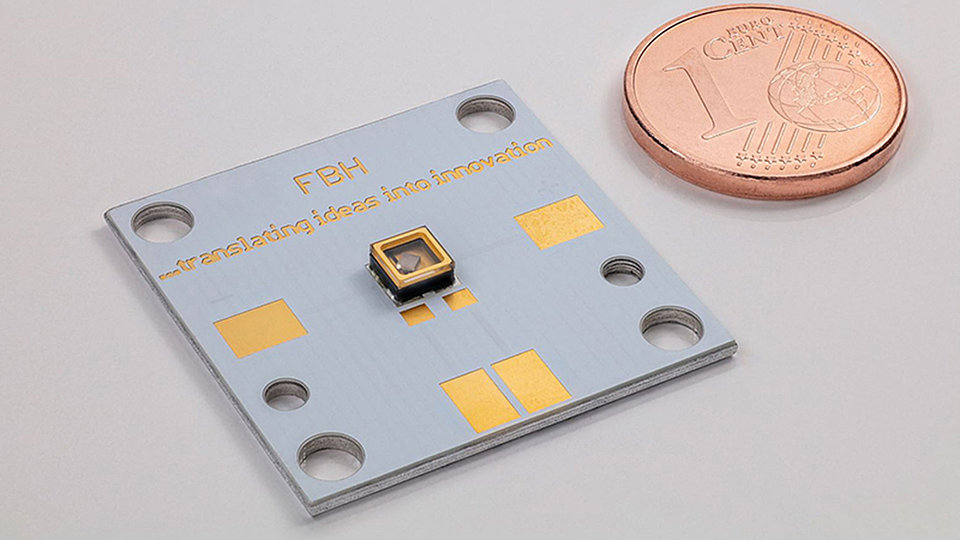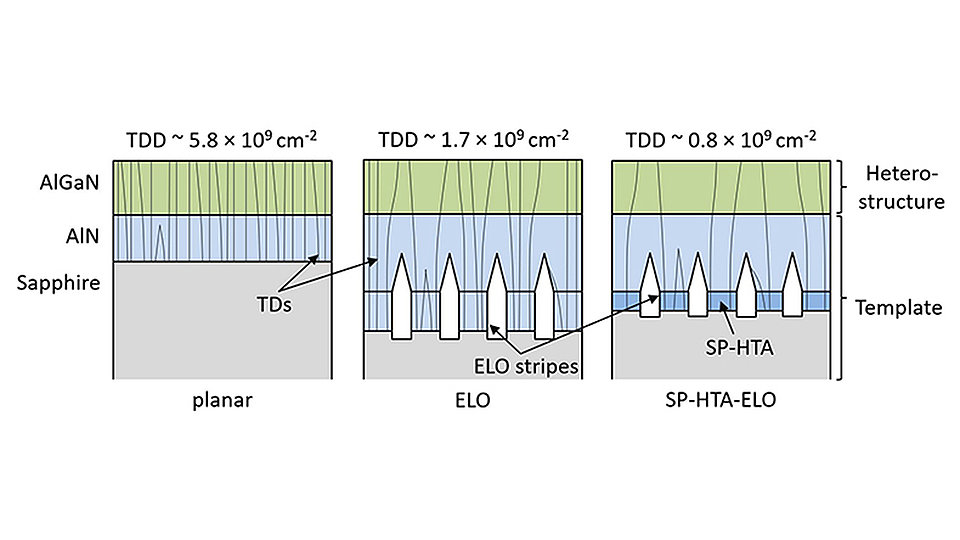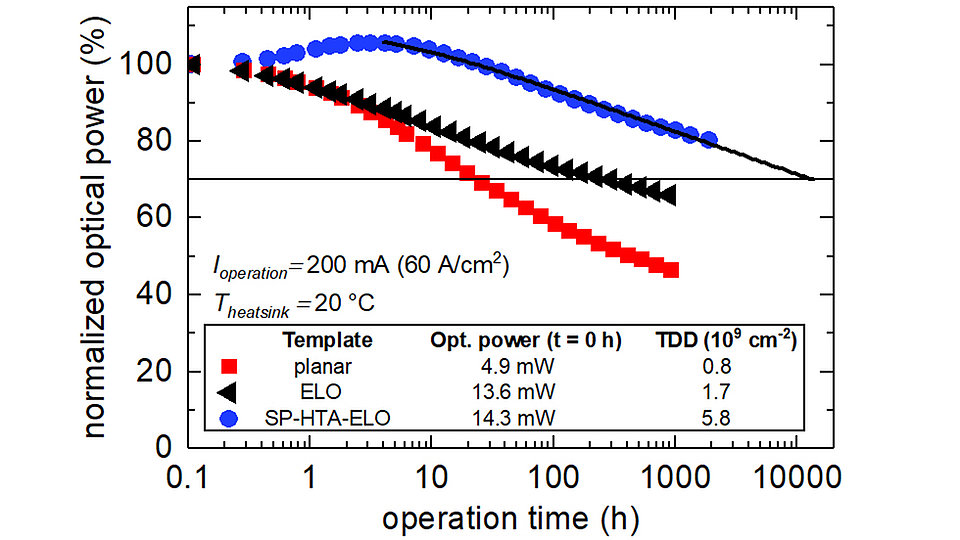Improved reliability of UVC LEDs and better understanding of degradation processes
Fig. 2: Schematic of the investigated UVC LED device structure with identical heterostructure on different templates. The templates consist of AlN layers which were grown on c-plane sapphire substrates.
AlGaN-based ultraviolet light-emitting diodes (UV LEDs) with emission wavelengths between 260 and 280 nm are expected to replace discharge lamps in many applications. In particular, they allow to effectively inactivate viruses, bacteria, and fungi, which makes them suitable for the disinfection of surfaces, water, and air. In this respect, UVC LEDs could even help to slow down the spread of viruses such as SARS-CoV-2. However, this requires not only UV LEDs with high optical power but also with long lifetime. Even though much progress has been made, the lifetime of state-of-the-art UVC LEDs is still limited to several thousand hours. By using AlN base layers of high crystalline quality, FBH and its partner TU Berlin have now succeeded in significantly increasing the lifetime of its UVC LEDs to beyond 10,000 h and in gaining a better physical understanding of the degradation processes involved (Fig. 1).
Previous studies on UV LEDs have attributed the reduction in optical power during operation to the generation or activation of crystal defects in or around the active region of the semiconductor heterostructure. These defects are assumed to act as non-radiative recombination centers for charge carriers and thus reduce the optical power. An activation process most likely results from the separation of hydrogen from such defects during operation. Recent experiments and simulations suggest that high energetic carriers from Auger recombination provide the energy required to remove one hydrogen atom from a defect. Since both Auger recombination and radiative recombination increase with carrier density, it is difficult to improve lifetime and optical power in parallel by adjusting the carrier distribution in the active region.
The approach of the investigations described here was to generally reduce the number of defects in the semiconductor and thus also those that can be activated and contribute to degradation. Threading dislocations (TD) are the most obvious defects in the semiconductor which are known to influence the efficiency of the device. The density of TDs, in turn, is essentially dictated by the AlN/sapphire template. Therefore, UVC LEDs with identical heterostructures were fabricated on templates providing different threading dislocation densities (TDD) (Fig. 2). The three templates used are: a planar epitaxial layer (high TDD), a layer fabricated by epitaxial lateral overgrowth (ELO, medium TDD), and a sputtered layer treated by both high-temperature annealing and ELO (SP-ELO-HTA, low TDD).
The LEDs with the highest TDD showed the lowest optical power and the fastest degradation (Fig. 3). In contrast, the lowest dislocation density resulted in the highest optical power and the longest lifetime of more than 10,000 hours. Obviously, TDs are related to the operation-induced degradation. Furthermore, observed temporal changes in the current-voltage characteristics do not correlate with the TDD. Therefore, the increase in leakage current due to the activation of TDDs or other defects associated with them is probably not the main cause of the reduction in optical power. This supports the idea that during operation pre-existing defects are activated and transformed into non-radiative recombination centers. The number of those defects are proposed to scale with the number of TDs. Consequently, a reduction of the TDD in the active region is critical to improve the lifetime and the optical power in parallel. New innovative concepts for AlN templates of even lower TDDs are needed to further improve the performance of UVC LEDs.
This research was funded by the Bundesministerium für Bildung und Forschung (consortium „Advanced UV for Life“, contract 03ZZ0130A) and the Deutsche Forschungsgemeinschaft (Collaborative Research Centre 787).
Publication
J. Ruschel, J. Glaab, N. Susilo, S. Hagedorn, S. Walde, E. Ziffer, H. K. Cho, N. Lobo Ploch, T. Wernicke, M. Weyers, S. Einfeldt, and M. Kneissl, „Reliability of UVC LEDs fabricated on AlN/sapphire templates with different threading dislocation densities“, Appl. Phys. Lett. 117, 241104 (2020).


